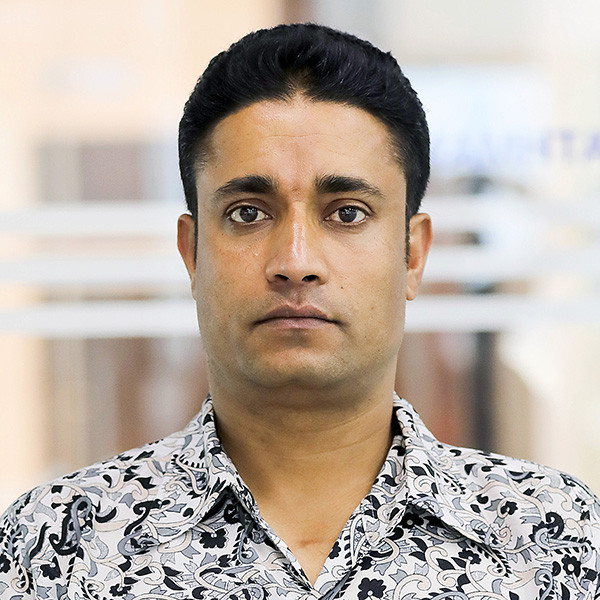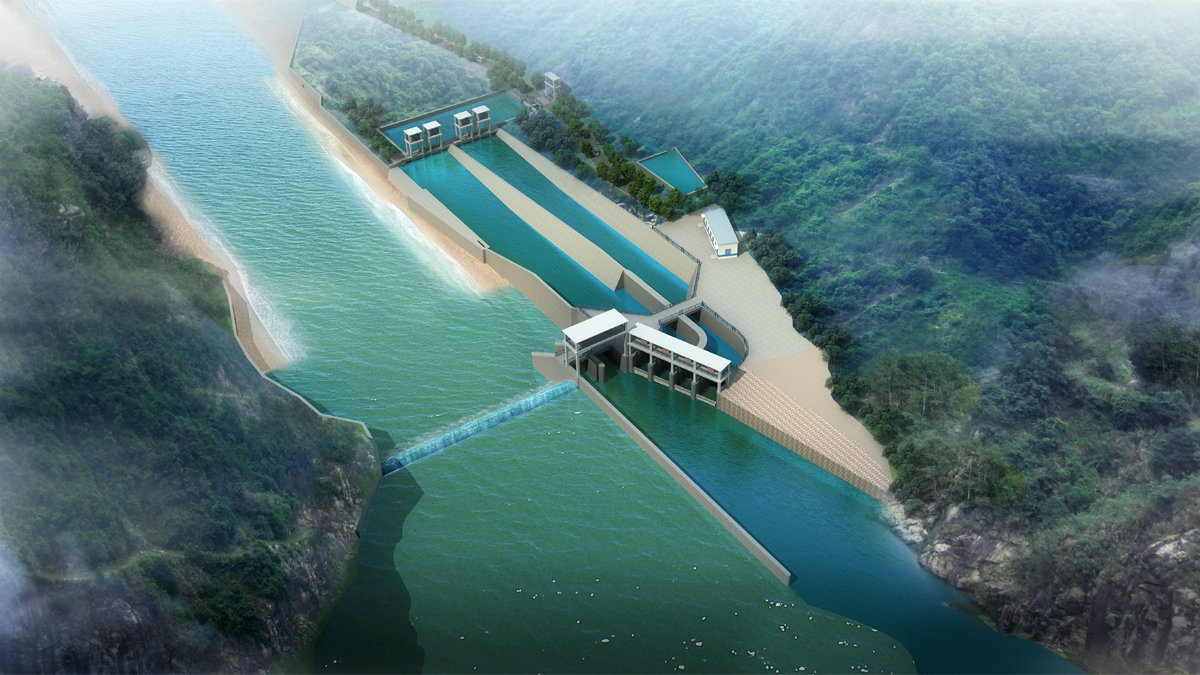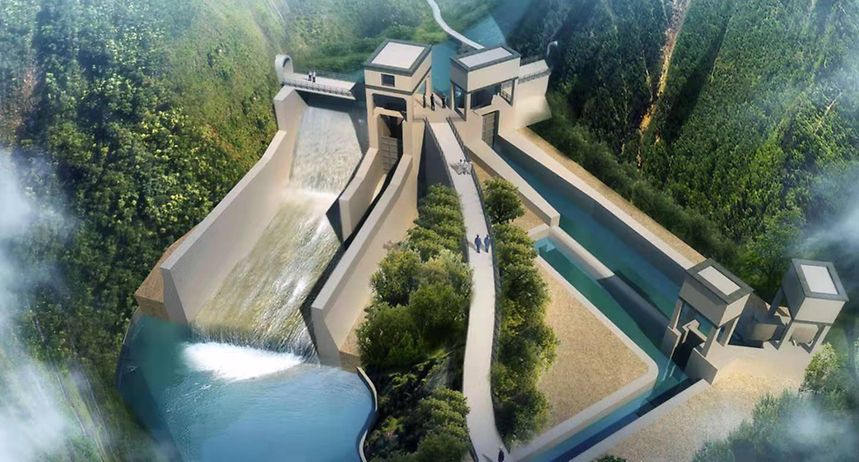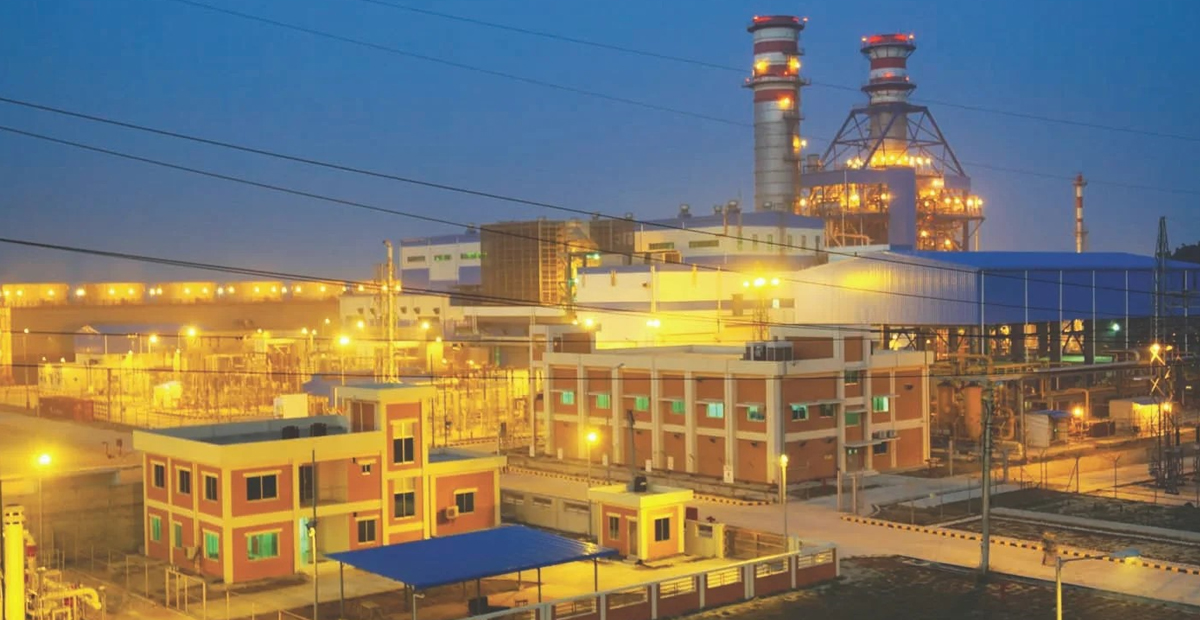Energy Update
How feasible is it for Nepal to look for exporting electricity to Bangladesh ?

Kathmandu; As a country looks forward to achieving a notable rate of economic growth, there is a massive rise in energy demand both at consumption and production levels of the country. Besides considering generating energy on their own, many such countries now have started looking forward to cross-border power trade to benefit out of comparative advantage.
South Asian countries thriving for high economic growth have also been looking for such collaboration to tap their potentials. Though much progress is yet to be seen in the line, some attempts have been made on a bilateral basis, mostly between Nepal and India while groundworks have been started between Nepal and Bangladesh.

In the row, Nepal has also started tapping its potential hydropower resources by centralizing its priority on production and trading of hydroelectricity via involvement of private sectors and foreign investors. During the United Nations framework Convention on Climate Change (UNFCCC) held on May 27, 2018, Nepal stated its plan to generate 4000 MW of hydroelectricity by 2020 and 12000 MW by 2030.
Even at present, Nepal has been unable to fully utilize the produced electricity of 2,000 MW domestically. According to Nepal Electricity Authority, Nepal is facing a loss of around Rs 5 billion annually from failing to utilize its 500 MW electricity produced in the rainy season. In the next three years, the country is expected to make available more than 3,000 MW of electricity in its national grid. This has made the country look forward to exporting the surplus electricity.

Prospects of the South Asian Countries
As many other countries, South Asian nations too, are looking forward to switching to renewable energy sources from fossil fuels, supporting the norms of sustainability. This will surely boost the demand for hydroelectricity in the region in future.
Another prospect for the power trade in the region lies in the fact that electricity supply and demand patterns in some South Asian nations are complementary, especially at the sub-regional level. For example, wet seasons in Bhutan and Nepal, which produce hydropower, coincide with summer peak demand in India and Bangladesh, creating power export opportunities. Dry seasons in Nepal coincide with lower demand in India, offering an opportunity for Nepal to import power from India.
According to a report of the World Bank, dependable supplies of electricity are vital to fuel South Asia's growing population and economy. Interconnected power systems offer a number of benefits. They reduce the need to build reserve capacity in individual systems, create economies of scale to generate electricity with lower per-unit costs, and offer global climate benefits.
The International Energy Agency also reports that the energy demand in South Asia will increase to double the global average demand in the next few decades. Only India’s energy is predicted to increase more than 140% as compared to 55% of the world demand as a whole. The growing demand for electricity is 7% per year in South Asian countries except for Bhutan, Afghanistan where the growth rates are expected over 13% first decade in order to meet rural electrification requirements
The growing countries of South Asia demonstrate an increasing trend with respect to energy intensity and represent an unmatched development in the demand and supply of energy sources. Thus, the energy insecurity of South Asia mainly originates from the lack of resources and rising imbalance of the demand and supply of energy sources. South Asian countries need to meet the increasing energy desire, secure and reasonably priced energy sources.
Although the talk had been started at various fronts to collaborate for power trade in the region, it was formalized only during SAARC Convention 2014 when the member countries principally agreed to collaborate in energy trade among them. Since the framework agreement, Bangladesh has been expressing its interest to purchase electricity from Nepal. Bangladesh is also stressing on investing in Nepal’s hydropower sector under the BBIN framework.
Bilateral issues of Nepal and Bangladesh power trade
Materializing the plan, which had been put on hold for a long time, both the countries have started expediting their move. A meeting of the energy secretary-level Joint Steering Committee of Nepal and Bangladesh on September 14 has agreed upon carrying out cross-border electricity trade using Indian transmission lines.
The governments of two countries have delegated authorities to Nepal Electricity Authority and Bangladesh Power Development Board for short-term power trade.
The two sides also decided to move ahead with the construction of Nepal-Bangladesh Dedicated Transmission Line with the participation and consent of India as a long-term measure. However, the consent of India is mandatory as the construction of a transmission line between Nepal and Bangladesh would also involve Indian territory.
The meeting also agreed on trade between Nepal and Bangladesh and Bangladesh's public and private investment in Nepal's hydropower development. Bangladesh has already pledged USD 1 billion for Sunkoshi II Hydroelectricity Power Plant with 1,110 MW capacity and Sunkoshi III with 536 MW capacity. In addition, the country has also expressed its interest to sign the Bilateral Investment Protection Agreement (BIPPA) with Nepal, which may see an initial investment of USD 3 billion together.
Of late, during a visit of the delegates from the Confederation of Nepalese Industries (CNI) to Bangladesh, the Bangladeshi authorities have expressed their interest to sign power purchase agreement (PPA) directly with Nepal's private sector hydropower producers.
According to CNI Vishnu Kumar Agrawal, Bangladesh is upgrading the cross border transmission line and dedicated line to purchase Nepali production while the country has planned to finalize the deal in this model in March 2022. With the Indian government endorsing a working guideline for cross-border power trade in March 2021, it has also opened the gateway for the trilateral power trade.
Nepal has potential to harness 43,800 MW of hydroelectricity for its economic benefit whereas the energy reserves of Bangladesh in this regard is only 340 MW. This shows the high prospects for Nepal to sell its electricity to Bangladesh, the country which is thriving for achieving high economic growth rate at present.
Bangladesh is expected to face electricity demand of 24,000 MW by 2040, while in the next four years, the country has planned to completely stop producing electricity from its coal plants. Currently, the country imports around 1,160 MW of electricity from India. The use of Nepali electricity is expected to lower Bangladesh’s cost of energy use by almost half of the existing expenses. These factors have also underscored the high prospects for
Nepal to sell electricity to Bangladesh
For cross border power trade with Bangladesh, it is necessary to go into a trilateral agreement that should include India in particular. While considering cross border power trade in south-Asia, “SAARC Framework Agreement for Energy Cooperation (Electricity)” is considered as the fundamental framework. This agreement was signed by all Member States of SAARC including Bangladesh in 18th SAARC Summit held in Nepal on 26th-27th November, 2014. Under the Agreement, SAARC member states will provide non-discriminatory access to the regional transmission grids in their respective countries. The Memorandum of Understanding (MoU) for Establishment of the BIMSTEC Grid Interconnection was signed on 31 August 2018 at the Fourth BIMSTEC Summit held in Kathmandu, Nepal. The MoU entered into force on 07 April 2019.
Bangladesh has planned to purchase Nepal’s production by using the Indian transmission lines, which India had already agreed upon. In this regard, Bangladesh has even signed anMoU with India to purchase 500 MW electricity at NPR 7.71 per unit for 25 years.
The Siliguri corridor of India has been sought as the most feasible grid to export Nepal’s produced electricity to Bangladesh. The southern neighbor has also relaxed the provisions related to it and given explicit recognition to tripartite arrangements in cross-border electricity trade.
Endorsing new guidelines on cross-border trading of electricity in 2018, India has adopted flexible policy in this matter. It has also talked about facilitating tripartite agreements for the power trade in the South Asian region. “In case of tripartite agreements, the cross border trade of electricity across India shall be allowed under the overall framework of bilateral agreements signed between Government of India and the Government of respective neighboring countries of the participating entities,” reads the guidelines. This has also paved a way to Nepal and Bangladesh to take their plan into action.
Challenges
The cross border power trade can provide significant economic and environmental benefits, however it has a number of undeniable challenges. It needs to deal with multiple energy sector regulatory frameworks, such differences in the mandates of regulators across the region can create coordination issues, lack of adequate transmission line and infrastructure, institutional capacity, financing policy, political consensus, multilateral, regional bodies and other energy related institution should extend technical and financial cooperation, it is difficult to bring the nations to the negotiating table.
In addition, volatile political relations among the neighboring countries are hampering the progress of various proposals on cross border power trade.
Chandra Ghimire, former Commerce Secretary, said Nepal can use at its best to export electricity to neighboring countries to minimize the ballooning trade deficit. However, the country also has to reconsider the feasibility to export electricity in the long run as these countries may switch to other sources for their energy requirement after they move forward on the development path. “Also, India’s assurance should remain intact throughout the time in order to export Nepal’s electricity to India,” Ghimire opined.
As power trade mere at government level may not help both the countries cash in the maximum potential benefits, involvement of private sectorsof both the countries is expected to yield better outcomes. Related work is in progress, but at a slow pace. At a time when Bangladesh has expressed its interest to purchase electricity from Nepali private sector, Nepal has stepped up to endorse a separate directive although the existing Electricity Act has not made any such provision.
According to Prabal Adhikari, director at Nepal Electricity Authority, India has expressed its consent allowing Nepal to export up to 250 MW of electricity to Bangladesh using the existing cross-border transmission line of India and Bangladesh. However, there is a need to construct a dedicated transmission line between Nepal and Bangladesh, along with a tie up with India, to ensure power trading between these countries in the long run, he says.
Both the countries have signed a bilateral agreement and stepped up to form a joint mechanism. However, it is crucial that they take the consensus of India to materialize the cross-border energy trade.
This feature news is taken from Urja Khabar Semi-annual Journal Publish on 16th January, 2022
Conversation
- Info. Dept. Reg. No. : 254/073/74
- Telephone : +977-1-5321303
- Email : [email protected]














